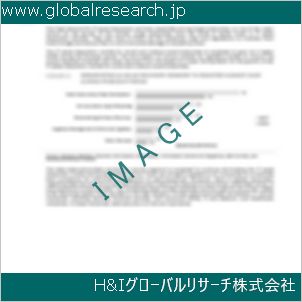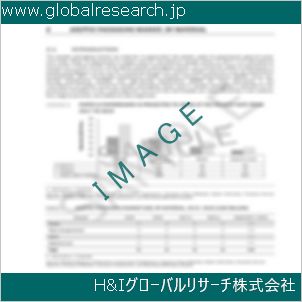1 Cereal Infant Complementary Foods Market Overview
1.1 Product Overview and Scope of Cereal Infant Complementary Foods
1.2 Cereal Infant Complementary Foods Segment by Type
1.2.1 Global Cereal Infant Complementary Foods Market Value Comparison by Type (2023-2029)
1.2.2 Rice
1.2.3 Wheat
1.2.4 Others
1.3 Cereal Infant Complementary Foods Segment by Application
1.3.1 Global Cereal Infant Complementary Foods Market Value by Application: (2023-2029)
1.3.2 Supermarket
1.3.3 Baby Shop
1.3.4 Online Retail
1.3.5 Others
1.4 Global Cereal Infant Complementary Foods Market Size Estimates and Forecasts
1.4.1 Global Cereal Infant Complementary Foods Revenue 2018-2029
1.4.2 Global Cereal Infant Complementary Foods Sales 2018-2029
1.4.3 Global Cereal Infant Complementary Foods Market Average Price (2018-2029)
1.5 Assumptions and Limitations
2 Cereal Infant Complementary Foods Market Competition by Manufacturers
2.1 Global Cereal Infant Complementary Foods Sales Market Share by Manufacturers (2018-2023)
2.2 Global Cereal Infant Complementary Foods Revenue Market Share by Manufacturers (2018-2023)
2.3 Global Cereal Infant Complementary Foods Average Price by Manufacturers (2018-2023)
2.4 Global Cereal Infant Complementary Foods Industry Ranking 2021 VS 2022 VS 2023
2.5 Global Key Manufacturers of Cereal Infant Complementary Foods, Manufacturing Sites & Headquarters
2.6 Global Key Manufacturers of Cereal Infant Complementary Foods, Product Type & Application
2.7 Cereal Infant Complementary Foods Market Competitive Situation and Trends
2.7.1 Cereal Infant Complementary Foods Market Concentration Rate
2.7.2 The Global Top 5 and Top 10 Largest Cereal Infant Complementary Foods Players Market Share by Revenue
2.7.3 Global Cereal Infant Complementary Foods Market Share by Company Type (Tier 1, Tier 2 and Tier 3)
2.8 Manufacturers Mergers & Acquisitions, Expansion Plans
3 Cereal Infant Complementary Foods Retrospective Market Scenario by Region
3.1 Global Cereal Infant Complementary Foods Market Size by Region: 2018 Versus 2022 Versus 2029
3.2 Global Cereal Infant Complementary Foods Global Cereal Infant Complementary Foods Sales by Region: 2018-2029
3.2.1 Global Cereal Infant Complementary Foods Sales by Region: 2018-2023
3.2.2 Global Cereal Infant Complementary Foods Sales by Region: 2024-2029
3.3 Global Cereal Infant Complementary Foods Global Cereal Infant Complementary Foods Revenue by Region: 2018-2029
3.3.1 Global Cereal Infant Complementary Foods Revenue by Region: 2018-2023
3.3.2 Global Cereal Infant Complementary Foods Revenue by Region: 2024-2029
3.4 North America Cereal Infant Complementary Foods Market Facts & Figures by Country
3.4.1 North America Cereal Infant Complementary Foods Market Size by Country: 2018 VS 2022 VS 2029
3.4.2 North America Cereal Infant Complementary Foods Sales by Country (2018-2029)
3.4.3 North America Cereal Infant Complementary Foods Revenue by Country (2018-2029)
3.4.4 United States
3.4.5 Canada
3.5 Europe Cereal Infant Complementary Foods Market Facts & Figures by Country
3.5.1 Europe Cereal Infant Complementary Foods Market Size by Country: 2018 VS 2022 VS 2029
3.5.2 Europe Cereal Infant Complementary Foods Sales by Country (2018-2029)
3.5.3 Europe Cereal Infant Complementary Foods Revenue by Country (2018-2029)
3.5.4 Germany
3.5.5 France
3.5.6 U.K.
3.5.7 Italy
3.5.8 Russia
3.6 Asia Pacific Cereal Infant Complementary Foods Market Facts & Figures by Country
3.6.1 Asia Pacific Cereal Infant Complementary Foods Market Size by Country: 2018 VS 2022 VS 2029
3.6.2 Asia Pacific Cereal Infant Complementary Foods Sales by Country (2018-2029)
3.6.3 Asia Pacific Cereal Infant Complementary Foods Revenue by Country (2018-2029)
3.6.4 China
3.6.5 Japan
3.6.6 South Korea
3.6.7 India
3.6.8 Australia
3.6.9 China Taiwan
3.6.10 Indonesia
3.6.11 Thailand
3.6.12 Malaysia
3.7 Latin America Cereal Infant Complementary Foods Market Facts & Figures by Country
3.7.1 Latin America Cereal Infant Complementary Foods Market Size by Country: 2018 VS 2022 VS 2029
3.7.2 Latin America Cereal Infant Complementary Foods Sales by Country (2018-2029)
3.7.3 Latin America Cereal Infant Complementary Foods Revenue by Country (2018-2029)
3.7.4 Mexico
3.7.5 Brazil
3.7.6 Argentina
3.8 Middle East and Africa Cereal Infant Complementary Foods Market Facts & Figures by Country
3.8.1 Middle East and Africa Cereal Infant Complementary Foods Market Size by Country: 2018 VS 2022 VS 2029
3.8.2 Middle East and Africa Cereal Infant Complementary Foods Sales by Country (2018-2029)
3.8.3 Middle East and Africa Cereal Infant Complementary Foods Revenue by Country (2018-2029)
3.8.4 Turkey
3.8.5 Saudi Arabia
3.8.6 UAE
4 Segment by Type
4.1 Global Cereal Infant Complementary Foods Sales by Type (2018-2029)
4.1.1 Global Cereal Infant Complementary Foods Sales by Type (2018-2023)
4.1.2 Global Cereal Infant Complementary Foods Sales by Type (2024-2029)
4.1.3 Global Cereal Infant Complementary Foods Sales Market Share by Type (2018-2029)
4.2 Global Cereal Infant Complementary Foods Revenue by Type (2018-2029)
4.2.1 Global Cereal Infant Complementary Foods Revenue by Type (2018-2023)
4.2.2 Global Cereal Infant Complementary Foods Revenue by Type (2024-2029)
4.2.3 Global Cereal Infant Complementary Foods Revenue Market Share by Type (2018-2029)
4.3 Global Cereal Infant Complementary Foods Price by Type (2018-2029)
5 Segment by Application
5.1 Global Cereal Infant Complementary Foods Sales by Application (2018-2029)
5.1.1 Global Cereal Infant Complementary Foods Sales by Application (2018-2023)
5.1.2 Global Cereal Infant Complementary Foods Sales by Application (2024-2029)
5.1.3 Global Cereal Infant Complementary Foods Sales Market Share by Application (2018-2029)
5.2 Global Cereal Infant Complementary Foods Revenue by Application (2018-2029)
5.2.1 Global Cereal Infant Complementary Foods Revenue by Application (2018-2023)
5.2.2 Global Cereal Infant Complementary Foods Revenue by Application (2024-2029)
5.2.3 Global Cereal Infant Complementary Foods Revenue Market Share by Application (2018-2029)
5.3 Global Cereal Infant Complementary Foods Price by Application (2018-2029)
6 Key Companies Profiled
6.1 Mead Johnson
6.1.1 Mead Johnson Corporation Information
6.1.2 Mead Johnson Description and Business Overview
6.1.3 Mead Johnson Cereal Infant Complementary Foods Sales, Revenue and Gross Margin (2018-2023)
6.1.4 Mead Johnson Cereal Infant Complementary Foods Product Portfolio
6.1.5 Mead Johnson Recent Developments/Updates
6.2 Nestle
6.2.1 Nestle Corporation Information
6.2.2 Nestle Description and Business Overview
6.2.3 Nestle Cereal Infant Complementary Foods Sales, Revenue and Gross Margin (2018-2023)
6.2.4 Nestle Cereal Infant Complementary Foods Product Portfolio
6.2.5 Nestle Recent Developments/Updates
6.3 Danone
6.3.1 Danone Corporation Information
6.3.2 Danone Description and Business Overview
6.3.3 Danone Cereal Infant Complementary Foods Sales, Revenue and Gross Margin (2018-2023)
6.3.4 Danone Cereal Infant Complementary Foods Product Portfolio
6.3.5 Danone Recent Developments/Updates
6.4 Abbott
6.4.1 Abbott Corporation Information
6.4.2 Abbott Description and Business Overview
6.4.3 Abbott Cereal Infant Complementary Foods Sales, Revenue and Gross Margin (2018-2023)
6.4.4 Abbott Cereal Infant Complementary Foods Product Portfolio
6.4.5 Abbott Recent Developments/Updates
6.5 Heinz
6.5.1 Heinz Corporation Information
6.5.2 Heinz Description and Business Overview
6.5.3 Heinz Cereal Infant Complementary Foods Sales, Revenue and Gross Margin (2018-2023)
6.5.4 Heinz Cereal Infant Complementary Foods Product Portfolio
6.5.5 Heinz Recent Developments/Updates
6.6 Bellamy
6.6.1 Bellamy Corporation Information
6.6.2 Bellamy Description and Business Overview
6.6.3 Bellamy Cereal Infant Complementary Foods Sales, Revenue and Gross Margin (2018-2023)
6.6.4 Bellamy Cereal Infant Complementary Foods Product Portfolio
6.6.5 Bellamy Recent Developments/Updates
6.7 Topfer
6.6.1 Topfer Corporation Information
6.6.2 Topfer Description and Business Overview
6.6.3 Topfer Cereal Infant Complementary Foods Sales, Revenue and Gross Margin (2018-2023)
6.4.4 Topfer Cereal Infant Complementary Foods Product Portfolio
6.7.5 Topfer Recent Developments/Updates
6.8 HiPP
6.8.1 HiPP Corporation Information
6.8.2 HiPP Description and Business Overview
6.8.3 HiPP Cereal Infant Complementary Foods Sales, Revenue and Gross Margin (2018-2023)
6.8.4 HiPP Cereal Infant Complementary Foods Product Portfolio
6.8.5 HiPP Recent Developments/Updates
6.9 Arla
6.9.1 Arla Corporation Information
6.9.2 Arla Description and Business Overview
6.9.3 Arla Cereal Infant Complementary Foods Sales, Revenue and Gross Margin (2018-2023)
6.9.4 Arla Cereal Infant Complementary Foods Product Portfolio
6.9.5 Arla Recent Developments/Updates
6.10 Holle
6.10.1 Holle Corporation Information
6.10.2 Holle Description and Business Overview
6.10.3 Holle Cereal Infant Complementary Foods Sales, Revenue and Gross Margin (2018-2023)
6.10.4 Holle Cereal Infant Complementary Foods Product Portfolio
6.10.5 Holle Recent Developments/Updates
6.11 Fonterra
6.11.1 Fonterra Corporation Information
6.11.2 Fonterra Cereal Infant Complementary Foods Description and Business Overview
6.11.3 Fonterra Cereal Infant Complementary Foods Sales, Revenue and Gross Margin (2018-2023)
6.11.4 Fonterra Cereal Infant Complementary Foods Product Portfolio
6.11.5 Fonterra Recent Developments/Updates
6.12 Westland Dairy
6.12.1 Westland Dairy Corporation Information
6.12.2 Westland Dairy Cereal Infant Complementary Foods Description and Business Overview
6.12.3 Westland Dairy Cereal Infant Complementary Foods Sales, Revenue and Gross Margin (2018-2023)
6.12.4 Westland Dairy Cereal Infant Complementary Foods Product Portfolio
6.12.5 Westland Dairy Recent Developments/Updates
6.13 Meiji
6.13.1 Meiji Corporation Information
6.13.2 Meiji Cereal Infant Complementary Foods Description and Business Overview
6.13.3 Meiji Cereal Infant Complementary Foods Sales, Revenue and Gross Margin (2018-2023)
6.13.4 Meiji Cereal Infant Complementary Foods Product Portfolio
6.13.5 Meiji Recent Developments/Updates
6.14 Yili
6.14.1 Yili Corporation Information
6.14.2 Yili Cereal Infant Complementary Foods Description and Business Overview
6.14.3 Yili Cereal Infant Complementary Foods Sales, Revenue and Gross Margin (2018-2023)
6.14.4 Yili Cereal Infant Complementary Foods Product Portfolio
6.14.5 Yili Recent Developments/Updates
6.15 Biostime
6.15.1 Biostime Corporation Information
6.15.2 Biostime Cereal Infant Complementary Foods Description and Business Overview
6.15.3 Biostime Cereal Infant Complementary Foods Sales, Revenue and Gross Margin (2018-2023)
6.15.4 Biostime Cereal Infant Complementary Foods Product Portfolio
6.15.5 Biostime Recent Developments/Updates
6.16 Yashili
6.16.1 Yashili Corporation Information
6.16.2 Yashili Cereal Infant Complementary Foods Description and Business Overview
6.16.3 Yashili Cereal Infant Complementary Foods Sales, Revenue and Gross Margin (2018-2023)
6.16.4 Yashili Cereal Infant Complementary Foods Product Portfolio
6.16.5 Yashili Recent Developments/Updates
6.17 Feihe
6.17.1 Feihe Corporation Information
6.17.2 Feihe Cereal Infant Complementary Foods Description and Business Overview
6.17.3 Feihe Cereal Infant Complementary Foods Sales, Revenue and Gross Margin (2018-2023)
6.17.4 Feihe Cereal Infant Complementary Foods Product Portfolio
6.17.5 Feihe Recent Developments/Updates
6.18 Beingmate
6.18.1 Beingmate Corporation Information
6.18.2 Beingmate Cereal Infant Complementary Foods Description and Business Overview
6.18.3 Beingmate Cereal Infant Complementary Foods Sales, Revenue and Gross Margin (2018-2023)
6.18.4 Beingmate Cereal Infant Complementary Foods Product Portfolio
6.18.5 Beingmate Recent Developments/Updates
6.19 Synutra
6.19.1 Synutra Corporation Information
6.19.2 Synutra Cereal Infant Complementary Foods Description and Business Overview
6.19.3 Synutra Cereal Infant Complementary Foods Sales, Revenue and Gross Margin (2018-2023)
6.19.4 Synutra Cereal Infant Complementary Foods Product Portfolio
6.19.5 Synutra Recent Developments/Updates
6.20 Wissun
6.20.1 Wissun Corporation Information
6.20.2 Wissun Cereal Infant Complementary Foods Description and Business Overview
6.20.3 Wissun Cereal Infant Complementary Foods Sales, Revenue and Gross Margin (2018-2023)
6.20.4 Wissun Cereal Infant Complementary Foods Product Portfolio
6.20.5 Wissun Recent Developments/Updates
6.21 Hain Celestial
6.21.1 Hain Celestial Corporation Information
6.21.2 Hain Celestial Cereal Infant Complementary Foods Description and Business Overview
6.21.3 Hain Celestial Cereal Infant Complementary Foods Sales, Revenue and Gross Margin (2018-2023)
6.21.4 Hain Celestial Cereal Infant Complementary Foods Product Portfolio
6.21.5 Hain Celestial Recent Developments/Updates
6.22 Plum Organics
6.22.1 Plum Organics Corporation Information
6.22.2 Plum Organics Cereal Infant Complementary Foods Description and Business Overview
6.22.3 Plum Organics Cereal Infant Complementary Foods Sales, Revenue and Gross Margin (2018-2023)
6.22.4 Plum Organics Cereal Infant Complementary Foods Product Portfolio
6.22.5 Plum Organics Recent Developments/Updates
7 Industry Chain and Sales Channels Analysis
7.1 Cereal Infant Complementary Foods Industry Chain Analysis
7.2 Cereal Infant Complementary Foods Key Raw Materials
7.2.1 Key Raw Materials
7.2.2 Raw Materials Key Suppliers
7.3 Cereal Infant Complementary Foods Production Mode & Process
7.4 Cereal Infant Complementary Foods Sales and Marketing
7.4.1 Cereal Infant Complementary Foods Sales Channels
7.4.2 Cereal Infant Complementary Foods Distributors
7.5 Cereal Infant Complementary Foods Customers
8 Cereal Infant Complementary Foods Market Dynamics
8.1 Cereal Infant Complementary Foods Industry Trends
8.2 Cereal Infant Complementary Foods Market Drivers
8.3 Cereal Infant Complementary Foods Market Challenges
8.4 Cereal Infant Complementary Foods Market Restraints
9 Research Finding and Conclusion
10 Methodology and Data Source
10.1 Methodology/Research Approach
10.1.1 Research Programs/Design
10.1.2 Market Size Estimation
10.1.3 Market Breakdown and Data Triangulation
10.2 Data Source
10.2.1 Secondary Sources
10.2.2 Primary Sources
10.3 Author List
10.4 Disclaimer
| ※参考情報 乳幼児用補完食品としてのシリアルについて考える場合、まずその定義から明確にしなければなりません。乳幼児用補完食品とは、母乳または乳児用ミルクに加えて与えられる食品のことであり、通常は生後6か月から1歳頃までの幼児に提供されます。シリアルは、その補完食品の一形態であり、穀物を主成分とした食品です。 シリアルの特徴としては、まず栄養価の高さが挙げられます。シリアルは、穀物から得られる炭水化物の他にも、ビタミンやミネラル、食物繊維など、身体の成長に欠かせないさまざまな栄養素を含んでいます。また、シリアルは消化が良く、幼児の発育に適したものが多いのも特徴です。さらに、幼児が自ら手でつかんで食べることができる形状やサイズに調整されているため、食べる楽しさも提供します。 シリアルの種類については、いくつかのカテゴリーに分けることができます。まずは穀物の種類です。米、オーツ、大麦、小麦、トウモロコシなど、さまざまな穀物が使用されます。これらは、特定の栄養素が豊富であるため、幼児の成長に必要な栄養をバランスよく補う役割を果たします。また、シリアルはその製造過程において、加工方法によっても分類されます。例えば、フレーク状やパフ状、グラノーラなど、テクスチャーや食感が異なる製品が多数存在します。 用途としては、シリアルは主に離乳食の一環として使用されます。母乳やミルクだけでは不足しがちな栄養素を補うために、摂取が推奨される時期が定められています。また、シリアルは調理が簡単で、数分で準備できることから、忙しい親にとっても便利な食品です。さらに、シリアルは他の食品と組み合わせることで栄養価を高めることができます。乳製品や果物、野菜と一緒に与えることで、より多彩な栄養摂取が可能になります。 関連技術としては、製造過程における衛生管理や栄養管理技術が挙げられます。乳幼児用シリアルは、特に幼い体に対して安全であることが求められるため、厳格な品質管理が行われます。また、栄養を最大限に保持するための加工技術や、添加物に関する規制も重要です。さらに、消費者のニーズに応じて、アレルゲンを排除したり、オーガニック原材料を使用することで、健康志向の高い製品も増えてきています。 シリアルの選び方や注意点についても触れておく必要があります。まず、原材料を確認することが大切です。何を主成分としているのか、また添加糖や塩分が過剰に含まれていないかなど、パッケージの成分表示をよく見ることが必要です。また、アレルギー反応を引き起こす可能性のある成分が含まれていないかも、特に注意が要ります。また、栄養成分のバランスも重要なポイントであり、幼児の成長段階に応じた適切な栄養が含まれているか確認する必要があります。 近年では、シリアル市場においてもさまざまなトレンドが見られます。特に、栄養素強化に関する関心が高まっているため、鉄分やカルシウム、ビタミンDなどの添加が行われるケースが多くなっています。また、グルテンフリーやビーガンの選択肢も増えており、様々な食事のニーズに応える製品が市場に登場しています。親たちは、幼児に対して健康的な食品選びを行いたいと考えているため、これらのニーズを満たすことが今後のシリアル製品の重要なポイントとなるでしょう。 最後に、乳幼児用シリアルは単なる栄養補助食品に留まらず、家族全体の健康意識とも関連しています。親が選ぶ食品が子どもの食習慣に影響を与えるため、シリアルを通じて健康的な食習慣の基盤を築くことが可能です。育児や食に対する意識が高まる中で、乳幼児用シリアルが果たす役割はますます大きくなっていくことでしょう。 |
❖ 免責事項 ❖
http://www.globalresearch.jp/disclaimer












